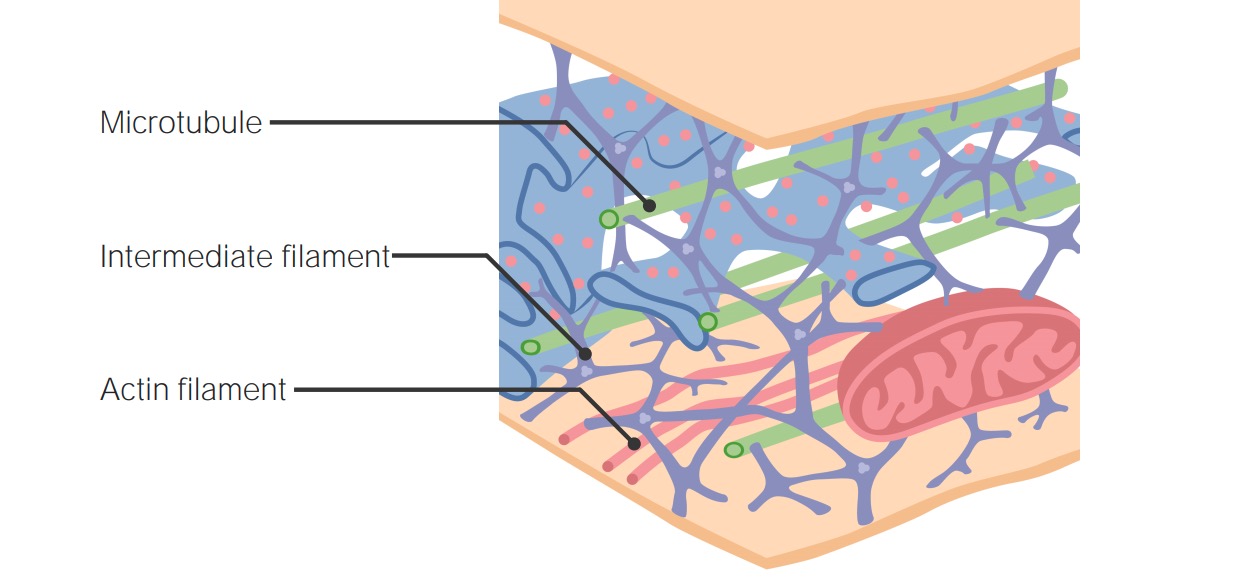Playlist
Show Playlist
Hide Playlist
Motor Proteins: Kinesin and Dynein
-
Slides Cellular Pathology - Motility and Structure.pdf
-
Download Lecture Overview
00:01 Let's get to the microtubules, cuz this is a very cool idea. 00:03 We wanna move vesicles, things that have been synthesized, say, and packaged by the golgi apparatus. 00:11 We wanna move that from the vicinity of the nucleus out to the periphery so we can deliver it for export, exocytosis, into the extracellular space. 00:20 How do we get things from here to there? And they just don't wander by Brownian motion, they're actually directed there through proteins that literally walk along the microtubule. 00:31 So, the protein that's shown here is kinesin. 00:35 And kinesin is a form of microtubule-associated motor proteins that move from the nucleus out towards the periphery, okay? Going in the other direction from the periphery to the nucleus are dyneins. 00:52 So, they're -- they are -- have similar function, but they have directionality, and they know which way they're going. Very cool. 00:59 And the way they walk is they literally bind, and then release. 01:04 Bind, and then release. And they literally walk with their cargo attached. 01:08 So, the cargo is up at the top as they walk along the microtubules. 01:13 So, ATP hydrolysis drives the translocation, so literally taking a step requires ATP to be hydrolyzed, and ADP in the little motors allows it to detach in the microtubule so it can take the next step. 01:26 And here, we have just an example. 01:29 We're moving towards the nucleus using dynein. 01:32 So, this is -- would be something that we have taken up by pinocytosis or phagocytosis from the periphery, and we wanna get it towards the nucleus or towards other organelles that are near the nucleus, like a lysosome. 01:43 And it is literally walking from the positive end to the negative end, and that's dynein. 01:50 Those are the dynein motors. 01:51 And then, we have the kinesin walking at the other way with its attached cargo. 01:55 So cool. And there's some beautiful movies that I highly recommend that you look up on YouTube that show exactly this sort of thing.
About the Lecture
The lecture Motor Proteins: Kinesin and Dynein by Richard Mitchell, MD, PhD is from the course Cellular Housekeeping Functions.
Included Quiz Questions
Which of the following statements is true?
- Kinesins transport vesicles from the nucleus to the periphery.
- Dyneins transport vesicles towards the cell surface.
- ATP allows the detachment of the motor protein tail from the microtubule.
- ADP allows the translocation of the motor protein tail along the microtubule.
- Motor proteins translocate vesicles through cross-bridges with actin monomers.
Customer reviews
5,0 of 5 stars
| 5 Stars |
|
5 |
| 4 Stars |
|
0 |
| 3 Stars |
|
0 |
| 2 Stars |
|
0 |
| 1 Star |
|
0 |




